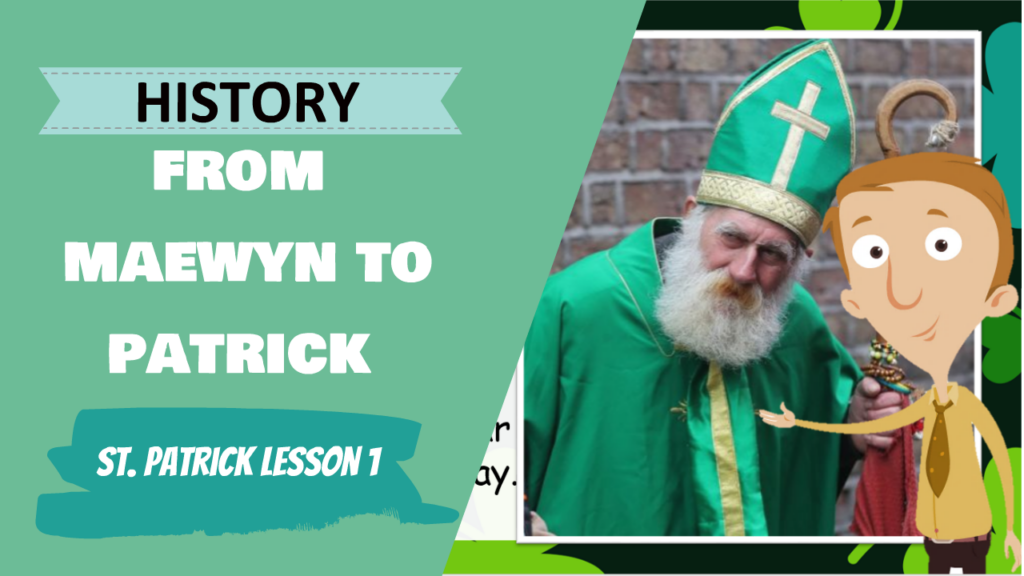The Story of St. Patrick

Resources For Download
Powerpoint
In this lesson, we take a look at the story of St. Patrick. We'll explore his life from riches to rags, to patron saint of Ireland. Through drama activities, the children will build empathy with Maewyn's struggle before inventing a 'snake banishing' invention to help rid Ireland of it's fabled snakes
Download PowerPoint
Activity 1
"Snake-Be-Gone" Invention
In this activity, children will invent a device or invention that will help St. Patrick get rid of the snakes in Ireland. They must draw an annotated sketch of the invention before explaining how it works.
Download Activity
Lesson Plan
Everything you need to give this lesson a try. On the left side we have our lesson objective, in the middle is the activities and on the right is the assessment tools!
Download Lesson Plan
For Your Plans
From the Curriculum
Strand: Local Studies
Strand Unit: Feasts and festivals in the past
Strand Unit: Feasts and festivals in the past
Curriculum Objectives
The child should be enabled to:
1) become familiar with the origins and traditions associated with some common festivals in Ireland and other countries
1) become familiar with the origins and traditions associated with some common festivals in Ireland and other countries
Learning Objectives
-develop and use the language of history: early Christian Ireland, rí, tribes, crest.
-explain in his/her own words what life in Early Christian Ireland was like
-listen to the teacher describe the scene of an early Christian settlement.
-create a unique identity for their native tribe.
-understand that pre-Viking Ireland was filled with different tribes and kings who were not united.
Learning Activities
-Assessing Prior Knowledge: The children will think, pair, share with a partner about what Ireland was like in the Early Christian times before the invasion of the Vikings.
-Compare and Contrast: Children fold an a4 paper in half. On one side they draw what they think pre-viking Ireland would have looked like. What would the building have been like? What about clothes etc.
-Guided Audio Tour: The class will close their eyes. The teacher will describe a picture of what a typical Irish settlement would have looked like at this time. The children will try to form a picture in their heads of what it would have been like. Compare and contrast their first drawing with their second drawing.
-Direct Teaching: The teacher will explain that Ireland was a very different place in the Early Christian times. Using PowerPoint, the class will discuss what life was like for normal people during this time.
-Clan Wars: Each group will be divided into different Early Christian tribes that were living in Ireland before the Viking invasion. They must create the following for their tribe:
1) A name for their tribe.
2) Choosing their ‘Rí’ and making a tin foil ‘torc’ for him/her.
2) Their tribe crest drawn and coloured onto cardboard shields
3) Their war cry
-Clan Wars: Adapted version of dodgeball, using softballs and the ‘clan shields’ created in the previous activity. The native clans will meet each other on the battlefield to take over each other’s land in a game of dodgeball. Players may block balls with their shields.
-Alternative Clan Wars: If the above is not possible. Mark a playing area big enough for two tribes. Play an adapted version of ‘capture the flag’. Two tribes stand across from one another. In the middle of the zone is a ‘flag’. Tribes must capture the flag and return it to their village without being tagged by the other tribe. Children may use shields to block tags. Once tagged, they must return to the village. If the ‘Rí’ gets tagged, the whole tribe are out.
Assessment
-Teacher Observation
-Teacher Designed Tasks
-Teacher Questioning:
1) Do children understand that Celt tribes were divided and usually fighting one another?
2) Can children describe some features of life in a Celt village?
3) Can children explain what Ireland was like before the Vikings came?